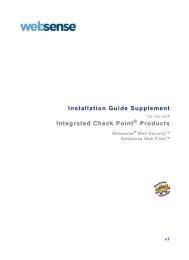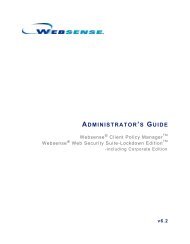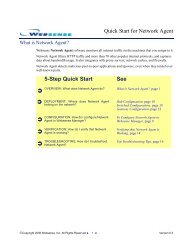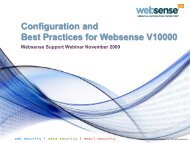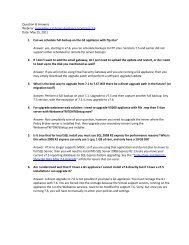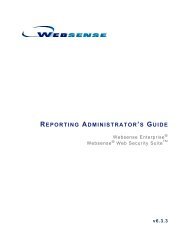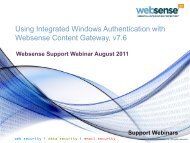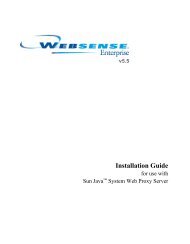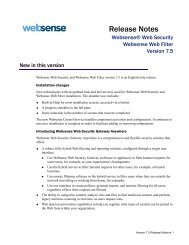You also want an ePaper? Increase the reach of your titles
YUMPU automatically turns print PDFs into web optimized ePapers that Google loves.
Chapter 2: Establishing Filtering Policies7. Repeat steps 3 through 6 to edit other rows. Each time period is definedon a separate row.Add or delete a row by right-clicking on a row to access the shortcutmenu, and then choosing Add Row or Delete Row.8. Click outside the table to exit the table area.9. Click OK.10. Click Save Changes above the navigation tree.Assign this policy to clients so <strong>Websense</strong> software can use it to filter Internetrequests (see Assigning a policy to clients, page 42).Working with clientsAssign policies to clients to determine how individuals and groups can accessthe Internet. Clients can be:Users:• Users: Specific users defined in a Windows directory service.• Groups: Specific groups established in a Windows directory service.• Domains: Groups of networked computers that share a commoncommunications address.• Organizational Units: Custom, high-level definitions in a Windowsdirectory service that associate related sub-groups. Computers: Individual computers in your network, defined by IPaddress. Networks: Groups of computers, defined collectively as a range of IPaddresses.To define users as clients, you must first configure <strong>Websense</strong> Express tocommunicate with your directory service. See Clients in the <strong>Websense</strong>Manager Help system for details.Even if you do not establish communication between <strong>Websense</strong> Express and adirectory service, you can add computers and networks as clients. See Addingcomputer and network clients, page 42.<strong>Websense</strong> Express User <strong>Guide</strong> 41



